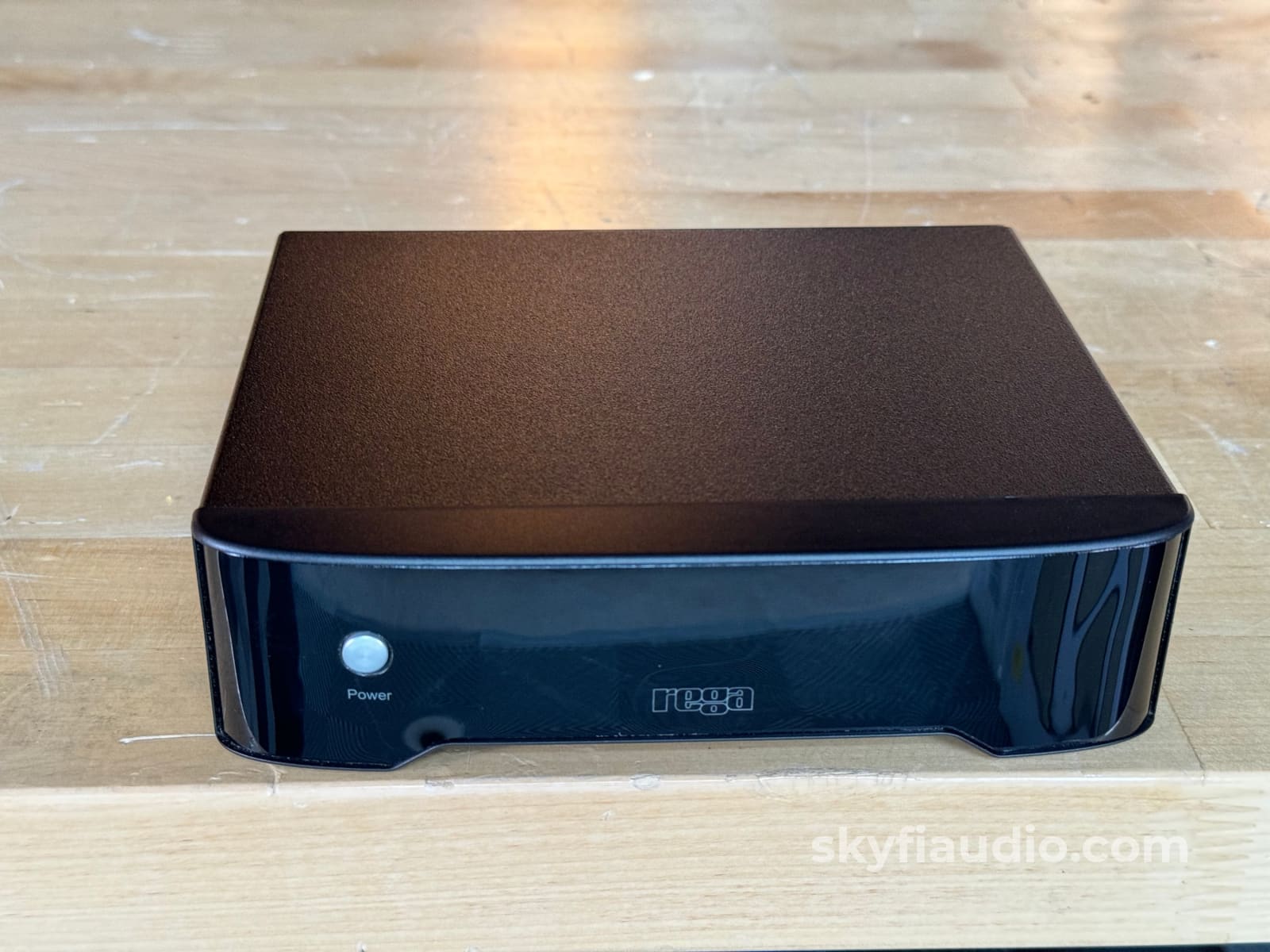
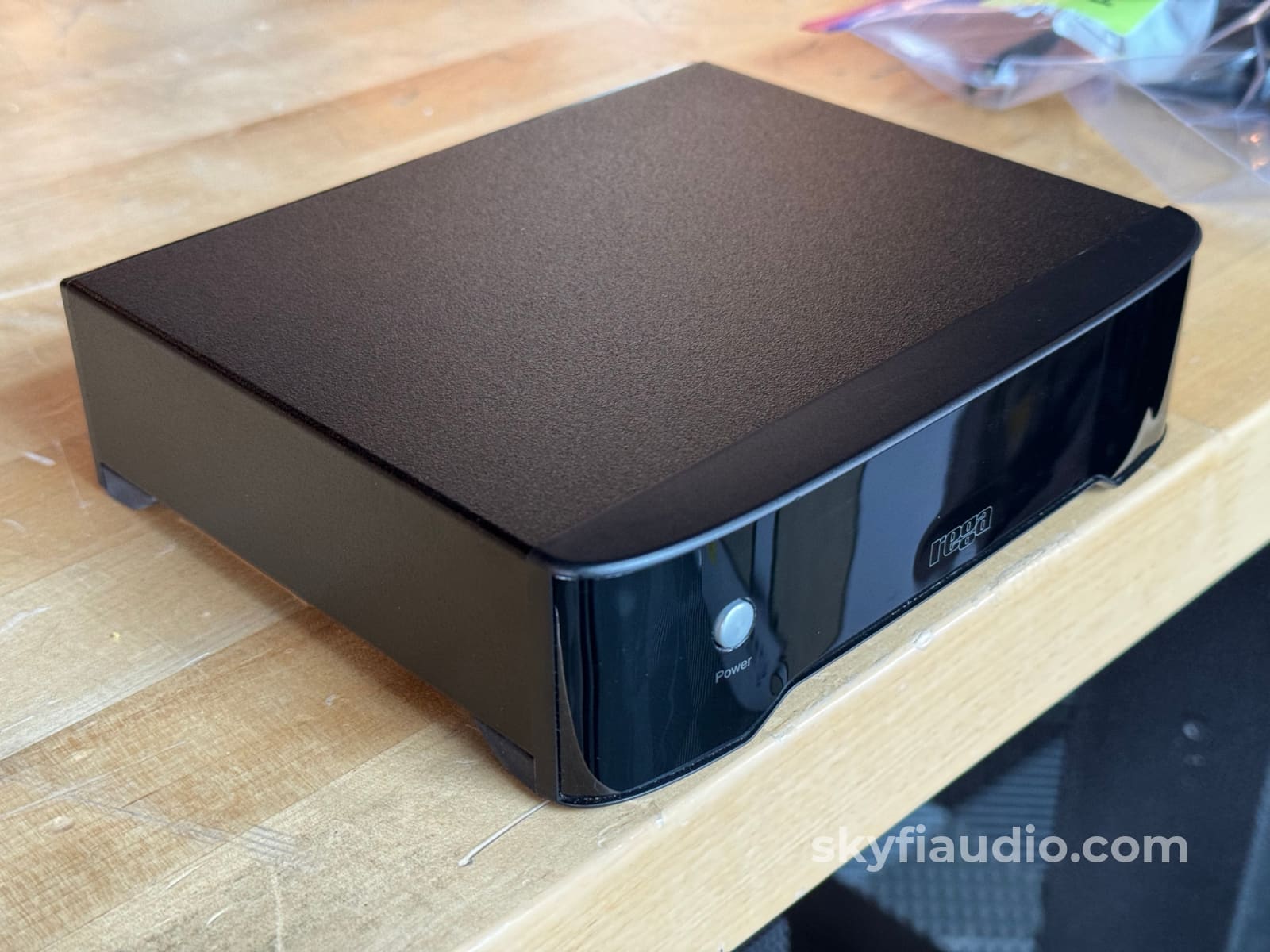
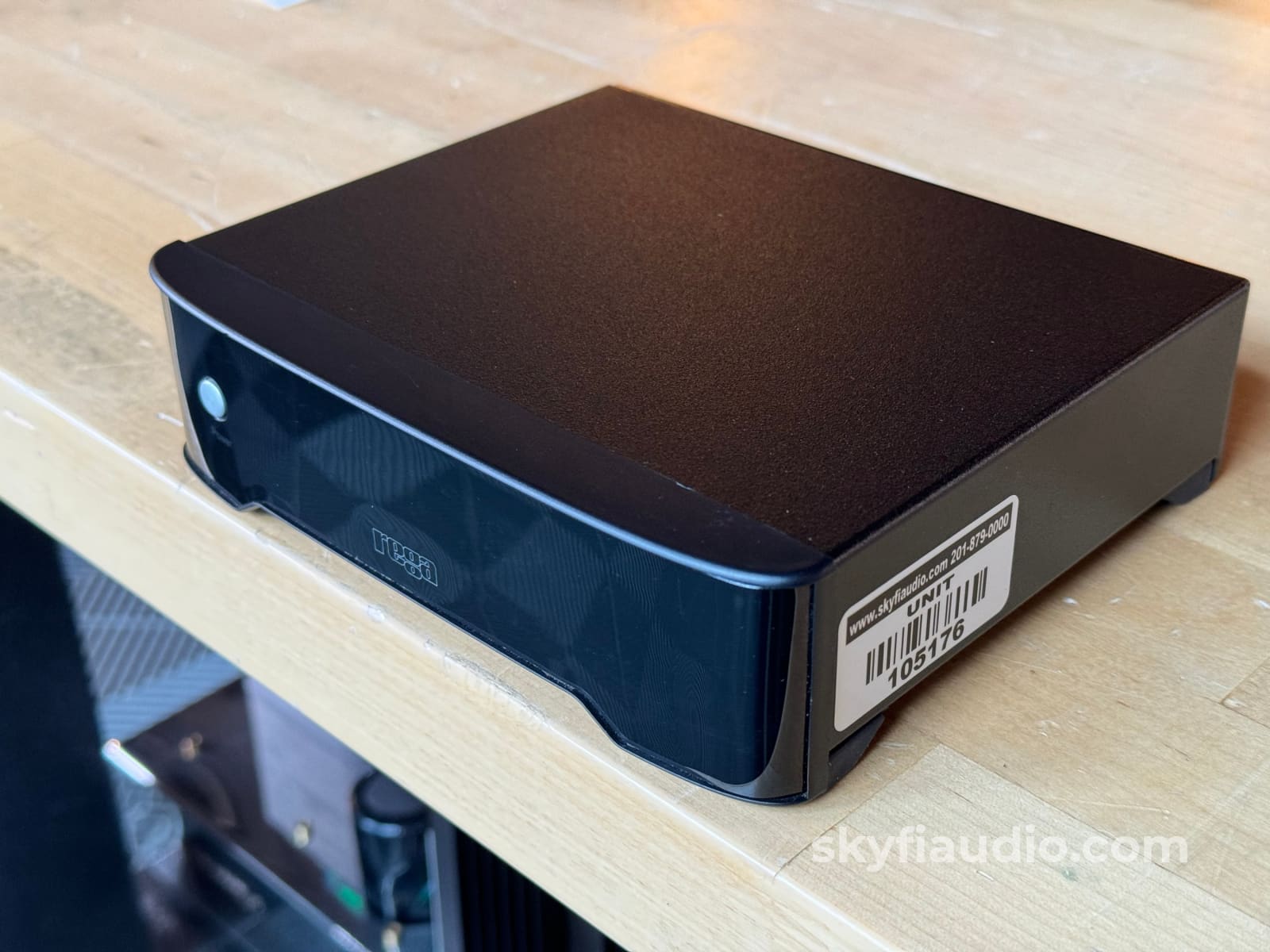
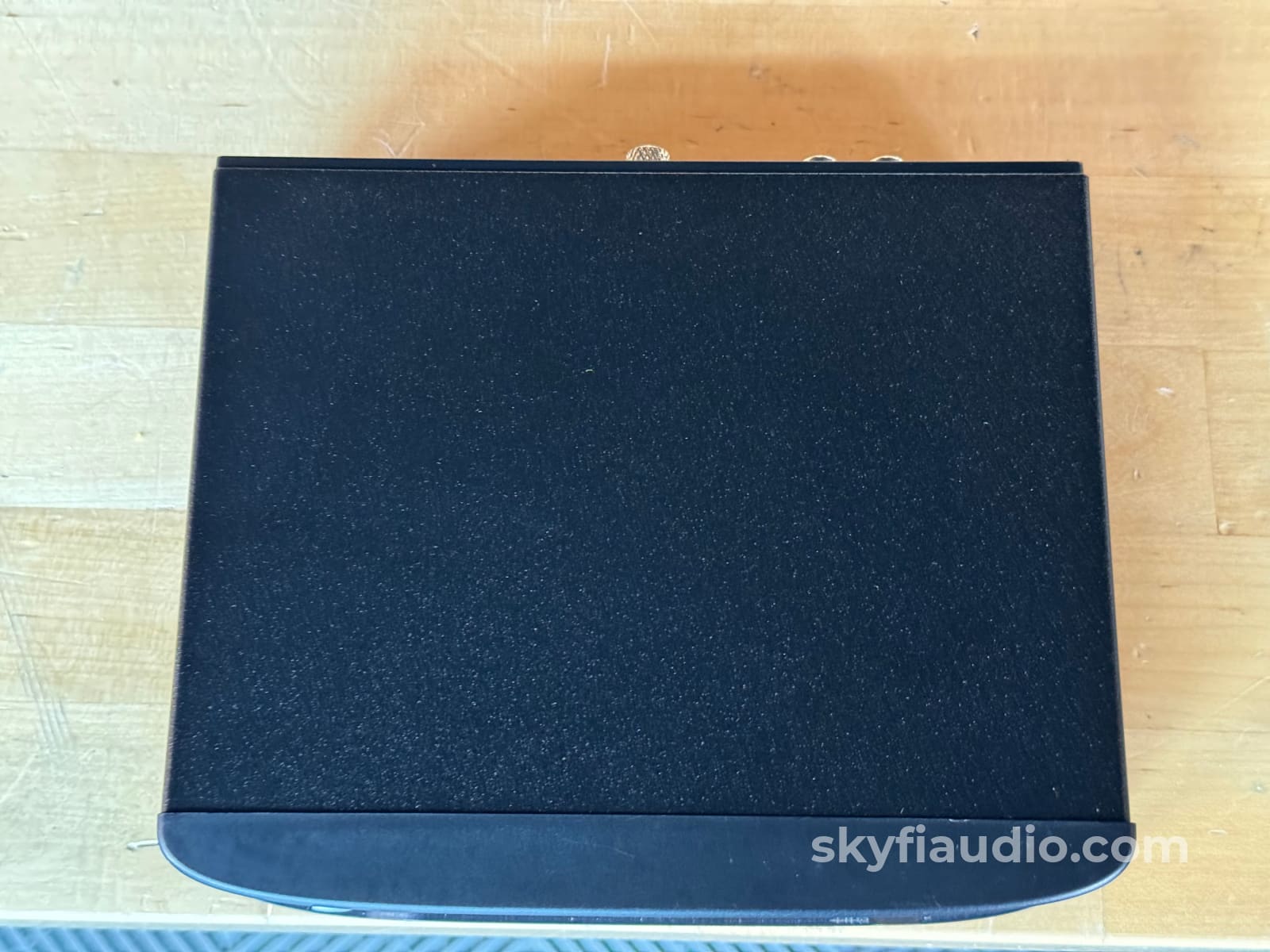
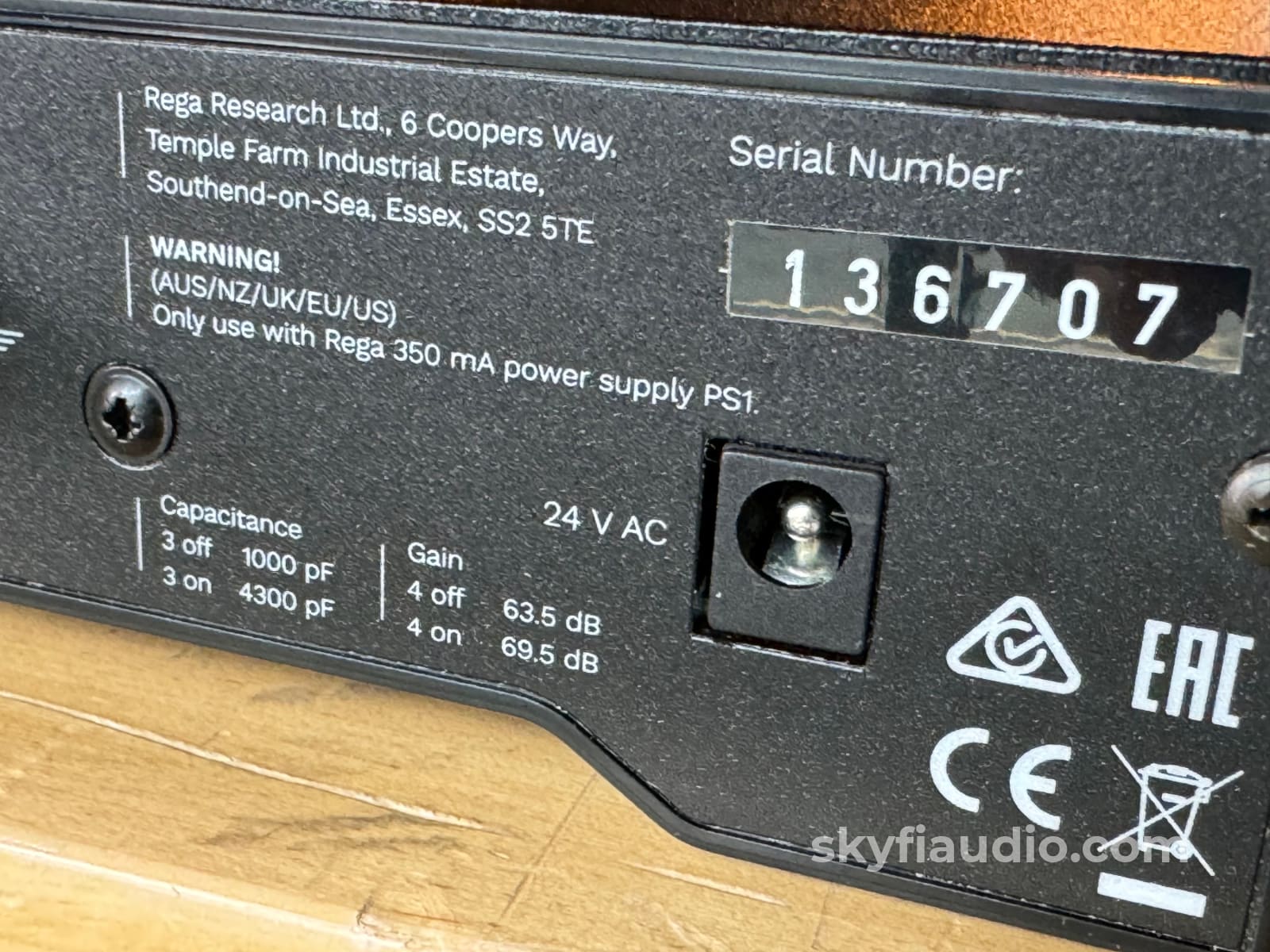
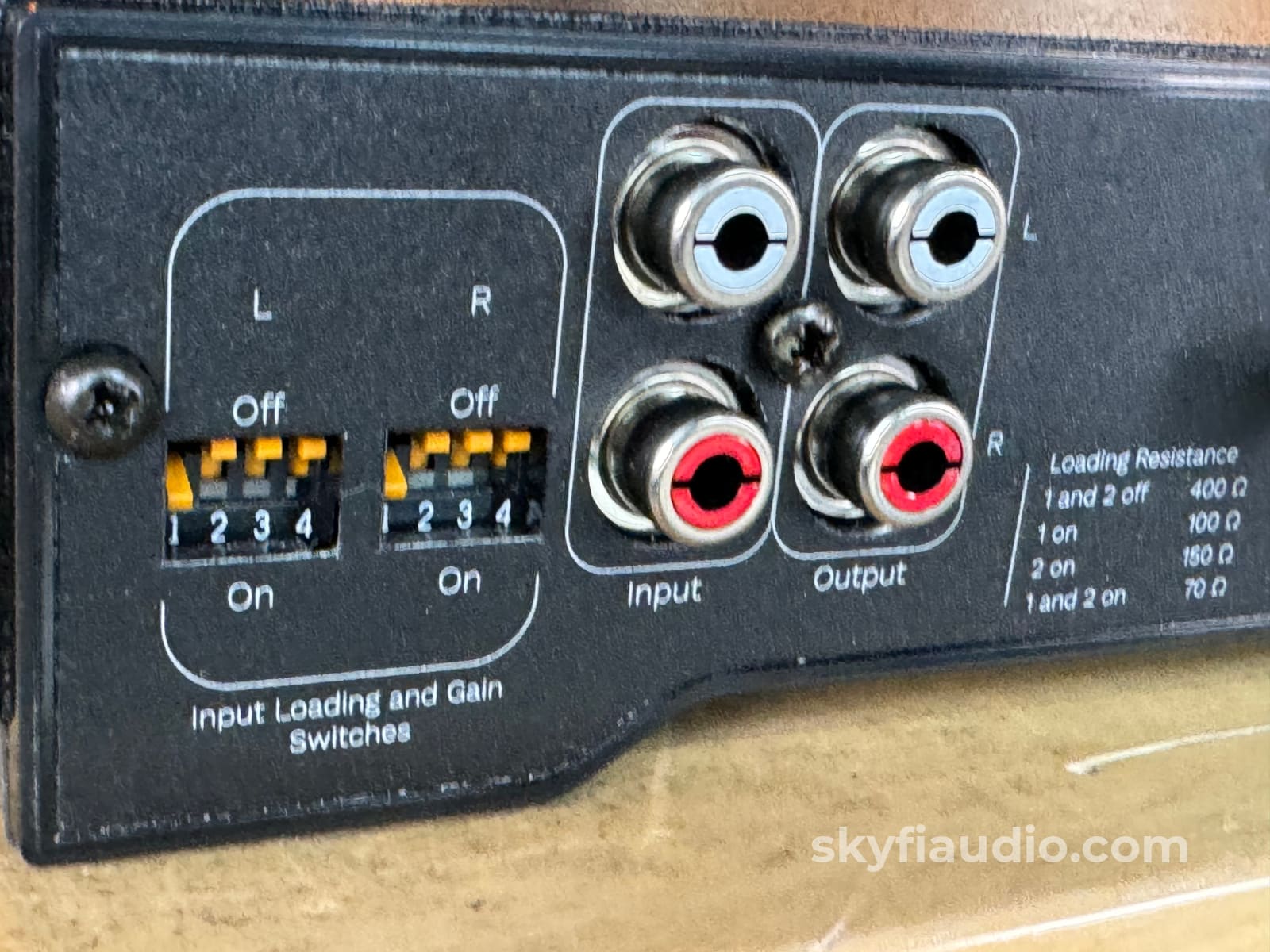
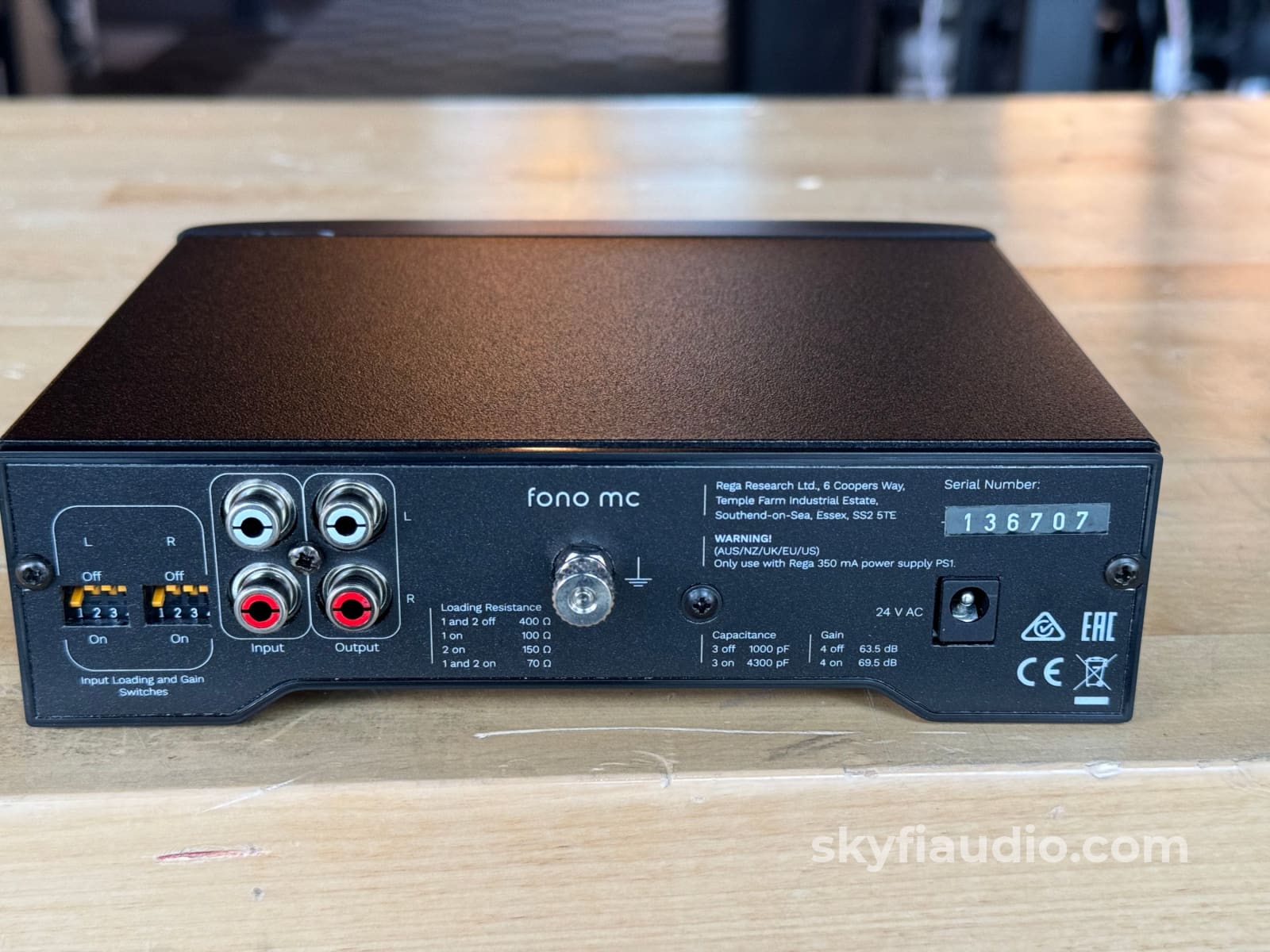
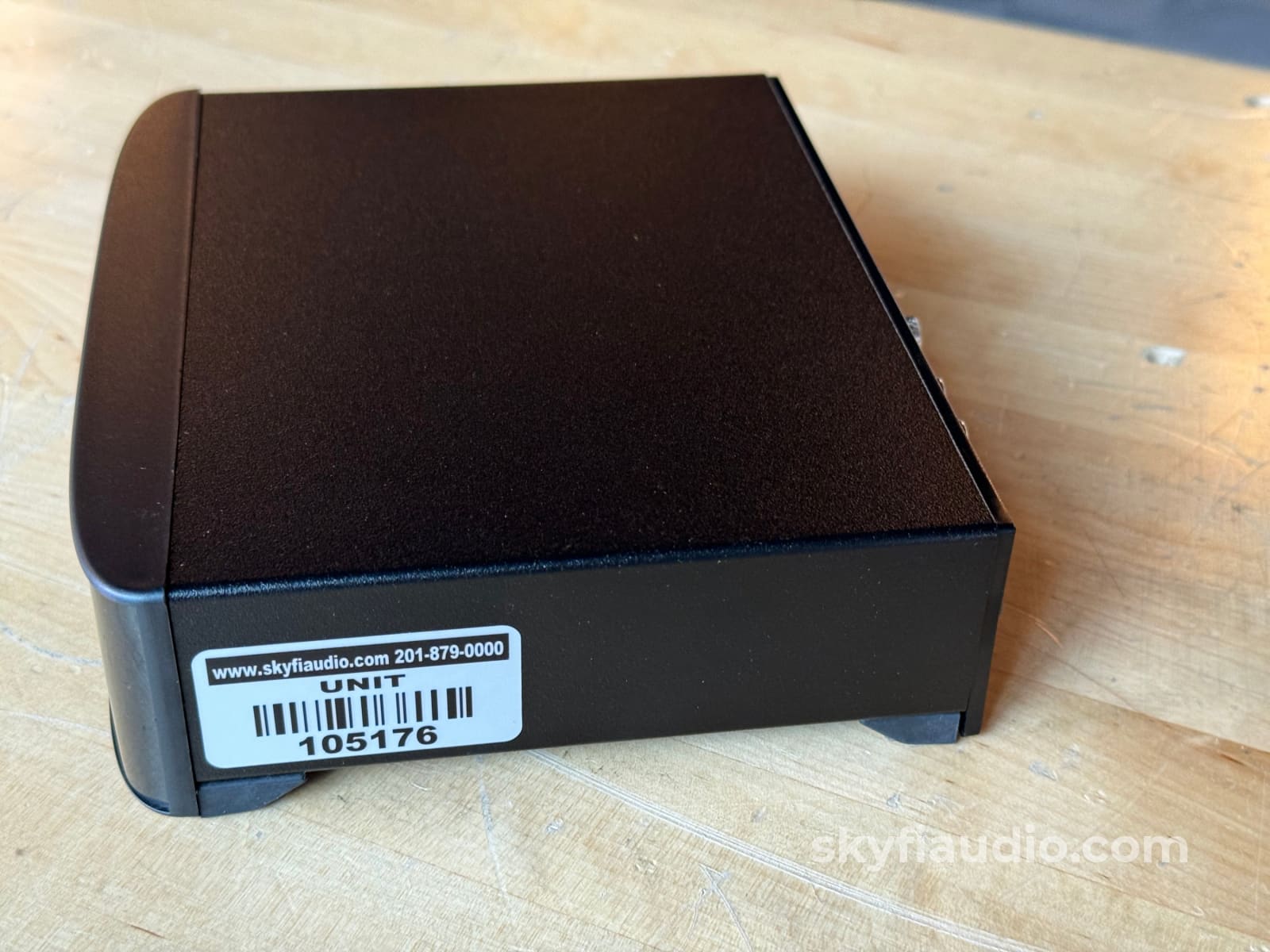
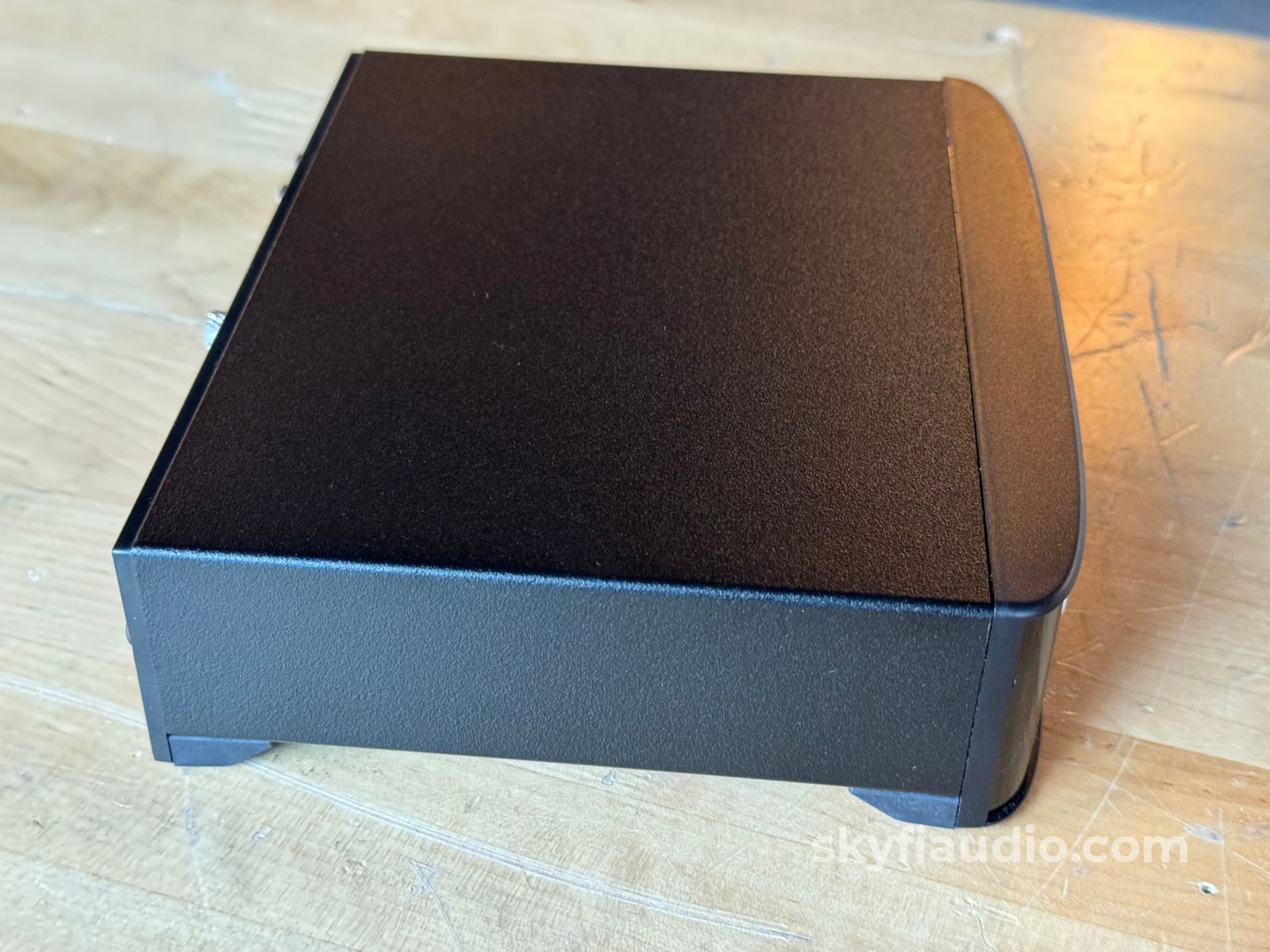
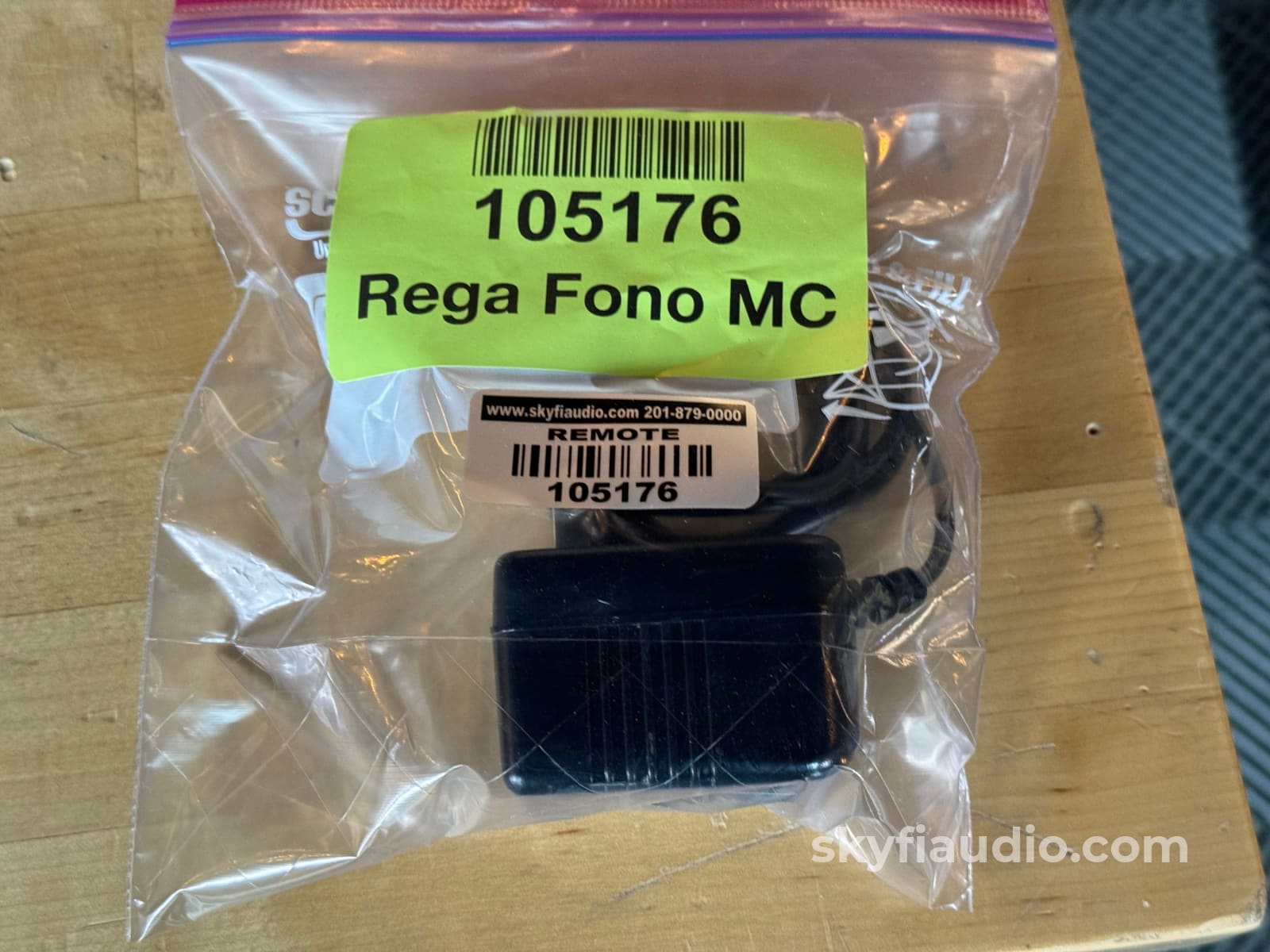
Rega Fono MC Phono Stage (Moving Coil)
Free Shipping on Most Electronics - Excludes Speakers and Items Requiring Freight - Contiguous U.S. Only
Pickup currently unavailable at SkyFi 479

Rega Fono MC Phono Stage (Moving Coil)
SkyFi 479
479 South Broad Street
Glen Rock NJ 07452
United States
General:
The Fono MC is an exceptionally high-quality MC phono stage designed to maximise the potential of any MC cartridge. Although specifically to compliment the latest Rega range of moving coils you will find full adjustability for loading is available via dip switches conveniently placed on the rear panel with two different gain settings located on the back panel making the Fono MC compatible with most low output MC cartridges.
The Fono MC has been designed to be effective, easy to use, and above all, to reproduce music. The Fono MC uses the Linear Systems low noise LSK389 FET in an all discrete input stage where low noise and linearity are vitally important to get the best from an MC cartridge. Because of the high input impedance of FET, the loading effects of the amplifier circuit are minuscule and do not affect the performance of the cartridge.
A MUSE operational amplifier is used in the RIAA equalization amplifier. Polypropylene capacitors have been used in the signal path and in the RIAA equalization circuits. There is selectable input loading for both resistance and capacitance along with two different gain settings located on the back panel making the Fono MC compatible with most low output MC cartridges.
The aesthetic design of the Fono MC was as important as the quality of its electrical capabilities, so it benefits from the same aluminium case as the Rega TTPSU and Fono MM amplifier, giving it a design which offers a familiar feel and moreover brings it in line with its illustrious bigger brothers. The new Fono MC circuit resulted from the design work carried out on the Aria phono amplifier.
Ownership:
Single Owner
Cosmetic Condition:
8/10 = Very Good. Excellent front faceplate, one minor flaw on chassis side or top. See our detailed rating description here.
Working Condition:
Working perfectly and tested in our lab and listening room.
Included:
Just the unit and power cord.
Packing:
Will be packed using our highly developed in-house process and custom packing materials.Specs:
Output impedance = 200
Recommended minimum output load resistance = 5K
Frequency response (50K output load) = 13Hz (-3dB) to 100KHz (-0.3dB)
RIAA accuracy (50K output load) = Better than +/-0.2dB 100Hz to 100KHz
Power requirements = 24V AC at 150mA maximum. Only to be used with Rega PS1.
Input sensitivity (for 200mV output)
4 off = 133uV
4 on = 67uV
Input loading resistance
1 and 2 off = 400
1 on = 100
2 on = 150
1 and 2 on = 70
Input loading capacitance
3 off = 1000pF
3 on = 4300pF
Gain (at 1 KHz)
4 off = 63.5dB
4 on = 69.5dB
Maximum input level (at 1 KHz)
4 off = 6.7mV
4 on = 3.4mV
Load settings for adjustable MC stages
Impedance -100ohm
Capacitance - 1000pF
Gain setting - High ('On' position for Rega phono stages)
Fono MC dip switches settings (factory set at Rega for Rega MC models).
Recommended Cables:
Kimber Kable - RCA Interconnects - Better
Kimber Kable - RCA Interconnects - Best
Kimber Kable - Phono Interconnects
Testing Process:
We start with a visual inspection of all internal components to make sure that there are no signs of heat stress or damage. Capacitors are checked for telltale signs of predictive failure including bulging, shrunken wrappers, or physical leakage. We also inspect the PCBs for discoloration from resistors or transistors that may have been running hot. On vintage units we often spot check select capacitors for value and ESR.
When we first power on a preamplifier we connect its RCA output to a Sencore PA81 Power Analyzer which simulates real world loading conditions and gives us an oscilloscope interface.
The first order of business is checking that the volume control works smoothly throughout its entire range with acceptable channel balance. This is accomplished by feeding a 1 KHz sine wave into one of the preamp’s line level inputs while monitoring the preamp’s output on an oscilloscope.
We then switch to a 1 KHz square wave to test the tone controls, loudness function, and filters where applicable. During this step we are watching for equal alteration of the test signal by both channels. This also helps us identify dirty controls that will need treatment.
Once the basic line stage functions are verified, we test each input individually. This is especially important for devices that use relays to select their sources. If the preamp is equipped with a phono stage we test that as well. We use an inverse RIAA filter which allows us to feed a reference test signal into the phono input with the proper RIAA equalization and level. A square wave or sine sweep is used to verify that the device’s phono stage is faithfully reproducing the RIAA curve. If the preamp under test has balanced inputs and/or outputs these are tested as well.
We finish up our bench testing with a listening test with our bench amplifier and reference speakers. During this test we check for hum or hiss that may not have shown up in earlier testing. We also check that all of the tone controls and filters perform as expected.
If the preamplifier has remote control functions these are also tested. Preamps with tube circuits or complicated power supply topologies are connected at our long term test rig for extended stress testing under real world conditions.
Choose options










